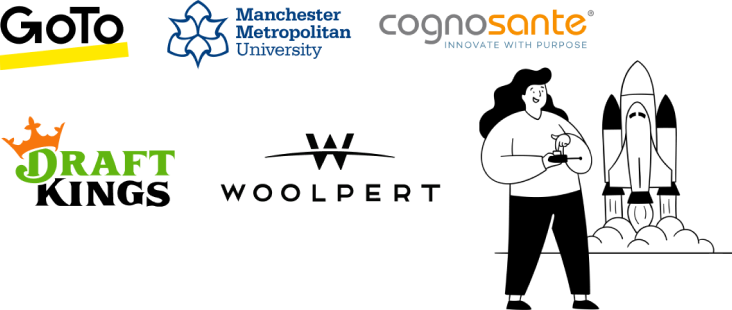
Reinventing the role of HR during the COVID-19 Pandemic : Business Continuity Planning, Chatbots, and Whatnot

To quote Dave Ulrich,
Navigating paradox accepts and heightens disagreements that enable organizations to change and evolve.”
This quote makes sense now more than ever. HR professionals need to become Paradox Navigators if they want their businesses to thrive amongst the COVID-19 global recession panic. A gargantuan task I know, but all the more doable.
When anyone hears the word HR, two things pop up on their mind. Hiring and Workplace Policies. Because hey, HRs are the ones who are going to hire anyone around here. Psst. Except for HR Chatbots, but more on that later 😉
Also, HRs are the ones who ensure that the relationship between a business and its employees as well as its customers are well-oiled and frictionless. But now, no thanks to the coronavirus outbreak, everything’s in limbo and HRs have to keep people up-to-date, be reassuring, and build trust. Whew, that’s a lot of work.
If you are an HR or someone who’s looking to help your HR personnel with some pointers, you’re in the right place. Let’s take a look at some of the things HRs have to cover for proper Business Continuity Planning (BCP).
Points HRs should cover before coming up with a BCP
HR personnel should focus on drafting the BCP around keeping employees productive, motivated, engaged, and connected. Because, when employees are taken well care of, they take good care of your business, for you. Following are some of the pointers for an HR to ponder over to ensure business continuity:
1. Handling Absenteeism with Ease
HRs should see to that employees within the company are cross-trained to handle critical/key roles/responsibilities in case people in that role report in sick. They can also hire over capacity for some of those critical capabilities to guarantee that we have the skillsets on hand. HRs should perform a proper analysis of their business to check whether their organization can operate with 25% or greater absenteeism/furlough.
2. Enabling Employees to stay connected
HR personnel should ensure that proper infrastructure is in place for providing manager resources for leaders to help keep their remote teams focused and connected and have encouraged daily touchpoint meetings, virtual coffee breaks, and more frequent organizational meetings.
3. Health and wellness benefits are going to be a game-changer
While planning out business continuity, HRs should be focussed on structuring it around the fact that employees would be dealing with health-related challenges or caring for their kids or other dependents during this crisis.
HR personnel would want to rethink their company’s approach to employees’ health care by investing in approaches that are more forward-thinking than the standard duty of care. This can easily be done by looking at everything through the employees’ lens, taking into account that the health and well-being of employees and their families are first and foremost.
HRs can even contract with physicians in cities where their workers are based to ensure that a doctor is quickly available to provide care, as well as advocate for them if they become ill and need to visit a hospital. HRs should see to that the company covers any testing and treatment costs associated with COVID-19 for employees and their families as well.
4. Providing Solace to employees at large
This will be a humongous task for HR professionals. Arranging for one-on-one calls with employees, keeping them up-to-date as well as being reassuring and building trust, all these go a long way for the business. When employees feel that they are understood during remote work, their productivity skyrockets and they do their best to drive the company towards glory.
If HR personnel were to consider the above points, they can easily draft an effective BCP. There is another way to make this easy on HRs. And that is…
HR Chatbots : How they can make a huge difference
Businesses can make use of Platform-As-A-Service providers (PaaS) to build AI-powered contextual chatbots with automated workflows that address both an HR and an employees’ IT query and solves the query real-time for them, on their business’ Slack or Microsoft Teams workspace. Some of the key areas where HR Chatbots can be used include:
1. Unbiased Hiring
Humans are subjective beings who make decisions based on their field of experience and even the most skilled and learned individuals are subject to unconscious biases. These prejudices also creep into the workplace and can compromise the hiring process. While there are safeguards to ensure that discrimination in the recruitment process is eliminated, the politically and socially charged times we live in mean that maintaining complete objectivity is often impossible.
HR chatbots can help eradicate human bias in the hiring process and take objective decisions based on the relevance of the applicant’s skill and experience. Chatbots can ensure that only relevant candidate attributes are taken into account while determining if he/she is the right fit for the role. Recently, there have been concerns regarding humans passing their subjective biases and views to machines and bots. However, the recognition of this will only result in a renewed focus on developing and training technology in an unbiased and fair manner.
2. Onboarding/Offboarding Employees
Companies can connect their human resources software like BambooHR or Zoho People with HR chatbots, allowing the chatbots to onboard/offboard employees in an instant. Whether it’d be adding a new employee’s details into the database, updating an existing employee’s details, getting the details of all employees or removing an employee’s details from the database, HRs can do this and more in the blink of an eye with HR chatbots at their disposal on their Slack or Microsoft Teams workspace.
3. HR Process Automation
HR processes like applying for leaves, checking leave balance, getting the list of holidays, requesting time-offs shouldn’t be much of a burden on employees. Employees don’t have to go through the hassle of logging in to a static HRMS portal where they have to navigate through endless convoluted menus to actually find what they are looking for, be it getting info on time-off policies, benefit plans, or downloading payslips. Businesses can automate all these tasks with HR chatbots so that employees can do all these and more on-the-go, on their business’ collaboration hub like Slack or Microsoft Teams.
4. Easy Access to Work-from-home Guidelines and other up-to-date information
HR chatbots also allow for making telecommuting guidelines and other up-to-date information easily accessible to employees on their business’ chat hub. This gives employees a sigh of relief as they are able to verify that they are following remote working policies and also able to follow up on the daily status of how the coronavirus pandemic is unraveling.
5. Getting employee feedback occasionally to check on their morale
HRs can use a no-code platform to build HR chatbots themselves quickly and add it to their business’ workspace. HRs can then set up conversations for the chatbot so that it asks employees for their feedback on remote work and what all they felt can be improved that front.
6. Automating questions to check COVID-19 symptoms for employees
HRs can consult with physicians can set up COVID-19 screening questions for employees on HR chatbots to enable employees to check if they are affected by the virus and to give them a sense of relief. HRs can also set up a COVID-19 knowledge base that employees can access through the chatbot.
In addition to the screener and knowledge base, HRs can set up a navigator tool that directs employees to custom endpoints such as virtual visits, appointment scheduling, a live chat agent, or coronavirus educational materials.
When the going gets tough, the tough get going
While previous tactics and strategies will continue to be a part of HR managers’ toolkit to efficiently manage employees, businesses all over the world will see a bigger shift taking place in the wake of the coronavirus that will fundamentally change the role of HR professionals.
The role of HR professionals will see a dramatic change in the foreseeable future via the evolution of the health care system with the private-sector and the public-sector communities working to fix what seems to be a relatively broken system.
HR personnel need to embrace the changes thrown at them to better navigate their business and employees through these tough times.
In this Blog


About the Author

Deepa Majumder
Deepa Majumder is a writer who nails the art of crafting bespoke thought leadership articles to help business leaders tap into rich insights in their journey of organization-wide digital transformation. Over the years, she has dedicatedly engaged herself in the process of continuous learning and development across business continuity management and organizational resilience.
Her pieces intricately highlight the best ways to transform employee and customer experience. When not writing, she spends time on leisure activities.

